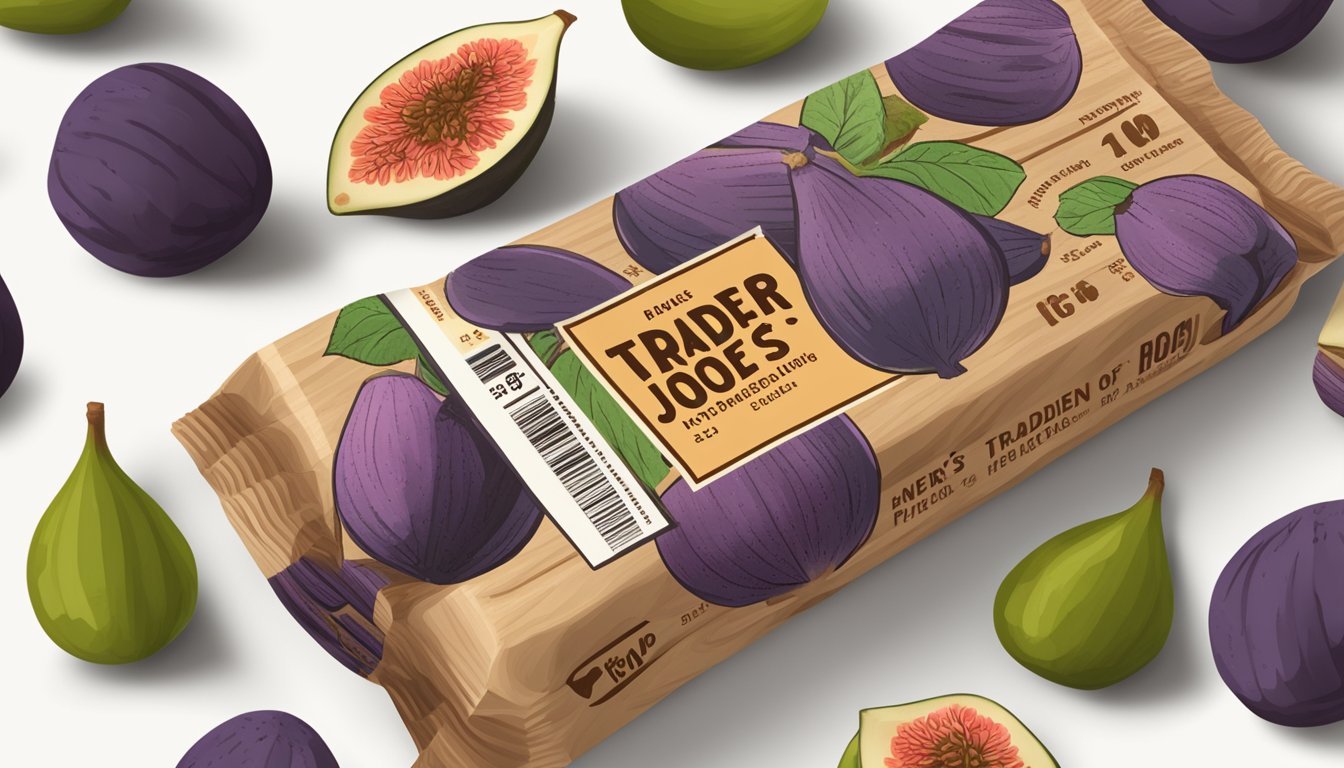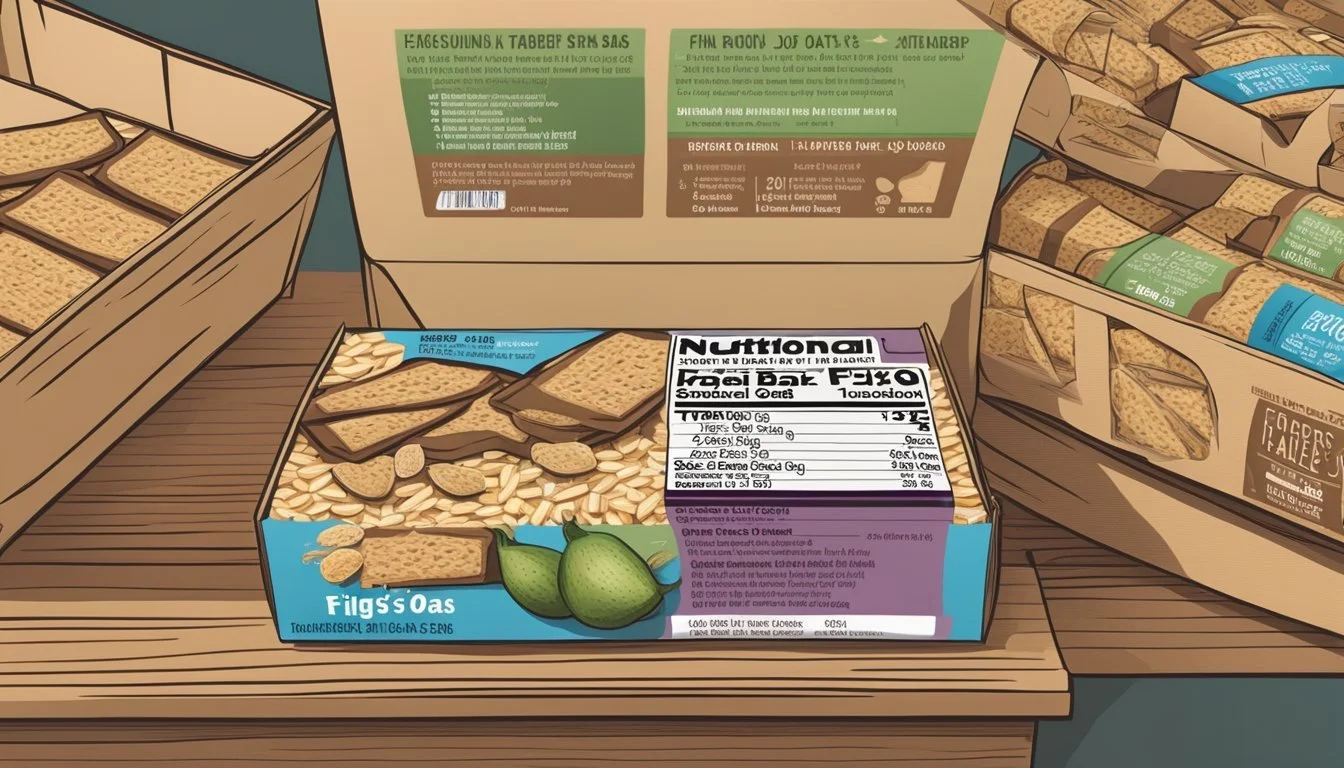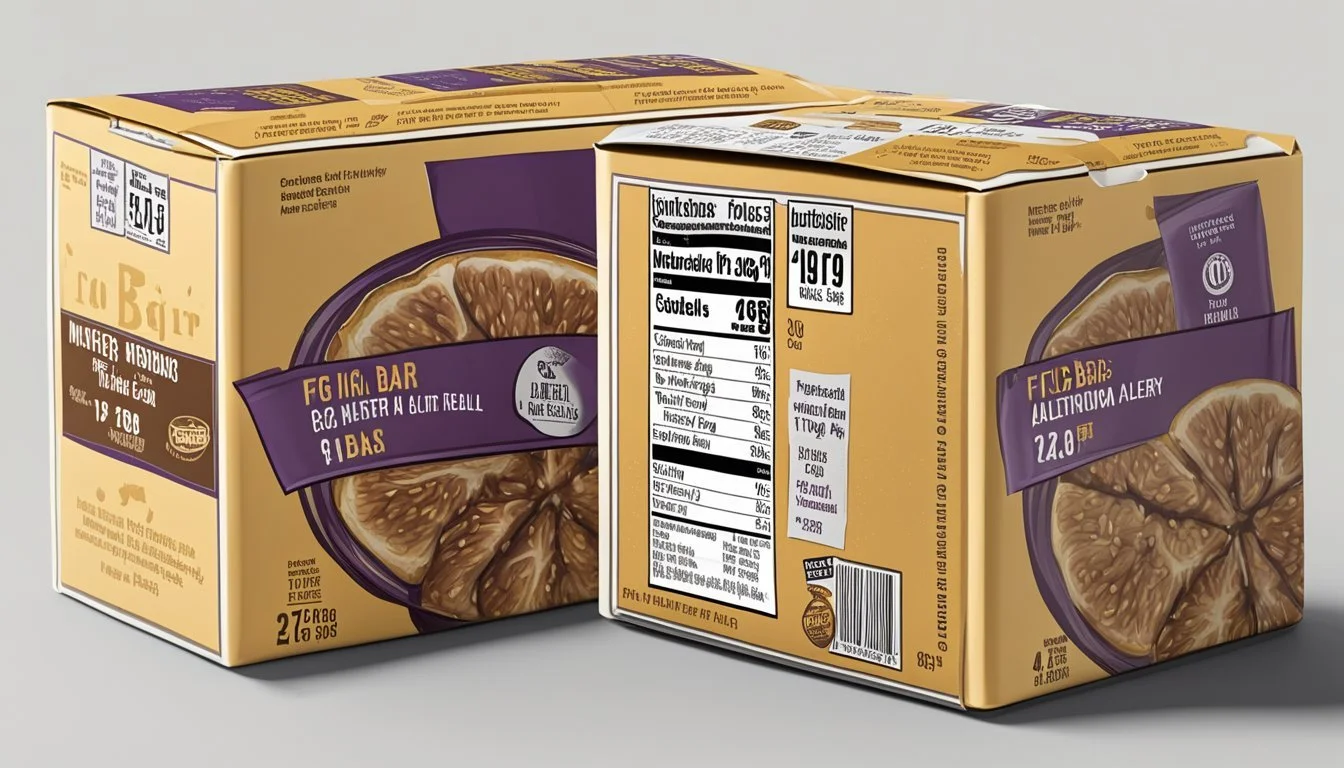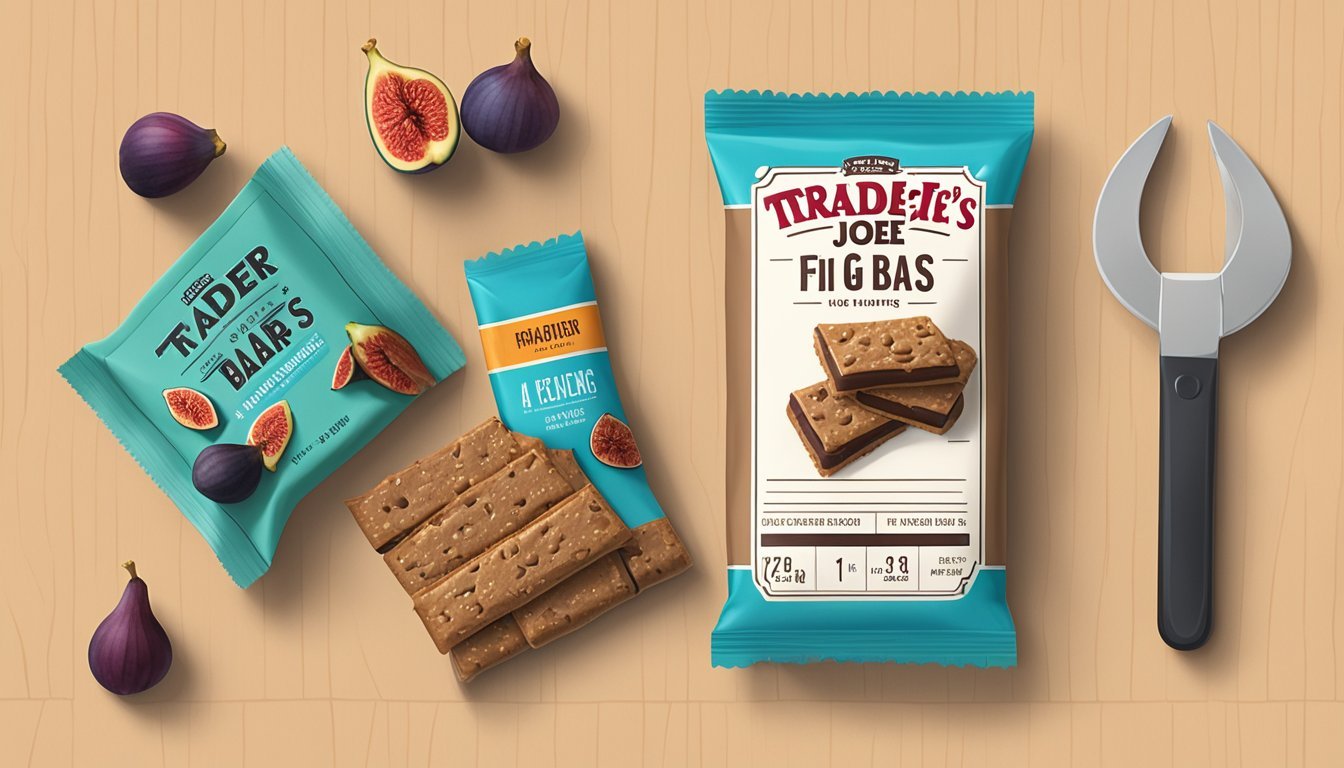Trader Joe's Fig Bars Nutrition Facts & More
A Balanced Snack Option
Trader Joe's Fig Bars have become a popular snack choice for many health-conscious consumers. These bars offer a convenient way to enjoy the sweet taste of figs in a portable format. Each Fig Bar from Trader Joe's contains approximately 120-140 calories, making it a moderate calorie snack option.
The nutritional profile of Trader Joe's Fig Bars is primarily composed of carbohydrates, with a small amount of fat and protein. They provide a quick source of energy, which can be beneficial for those looking for a mid-day pick-me-up or a pre-workout snack. While these bars do contain some natural sugars from the figs, they also offer dietary fiber, which can contribute to feelings of fullness and aid in digestion.
When considering Trader Joe's Fig Bars as part of a balanced diet, it's important to note their nutritional content. They can be a tasty alternative to higher-calorie desserts or snacks, but like any processed food, they should be consumed in moderation as part of an overall healthy eating plan.
Nutrition Overview
Trader Joe's Fig Bars offer a mix of macronutrients and calories typical of a sweet snack. They contain moderate amounts of carbohydrates, fats, and proteins, along with some micronutrients.
Calorie Content
A single Trader Joe's Fig Bar contains 120 calories. This represents about 6% of a 2000-calorie daily diet. The calorie density is relatively high at 326 calories per 100 grams.
For weight management, it's important to consider portion sizes. One bar can be a satisfying snack, but eating multiple bars could lead to excess calorie intake.
Macronutrients
The macronutrient breakdown of Trader Joe's Fig Bars is:
Carbohydrates: 81% (24g)
Fat: 15% (2g)
Protein: 3% (1g)
Carbohydrates are the primary macronutrient, likely from the figs and cereal components. The fat content is relatively low, while protein is minimal.
The bars contain some dietary fiber, which aids digestion. Sugar content should be noted, as figs are naturally high in sugars.
Micronutrients
Trader Joe's Fig Bars provide some essential micronutrients, though specific amounts aren't detailed in the available information.
Figs are generally good sources of:
Potassium
Calcium
Iron
The cereal component may contribute additional vitamins and minerals. However, these bars shouldn't be relied upon as a significant source of micronutrients in the diet.
It's best to consume these bars as part of a balanced diet that includes a variety of nutrient-dense foods.
Health Considerations
Trader Joe's fig bars offer a mix of nutritional benefits and potential concerns. Their composition impacts dietary fiber intake, sugar consumption, and fat profiles in ways that merit careful examination.
Dietary Fiber Importance
Fiber plays a crucial role in digestive health and weight management. Trader Joe's fig bars contain approximately 3 grams of dietary fiber per serving. This amount contributes to the recommended daily intake of 25-30 grams for adults.
Fiber aids in:
Promoting regular bowel movements
Controlling blood sugar levels
Lowering cholesterol
For those on a weight loss regimen, the fiber in these bars can help increase satiety. This may reduce overall calorie consumption throughout the day.
Sugar Content Analysis
Sugar content is a key consideration in these fig bars. Each bar contains around 12-14 grams of sugar. This represents a significant portion of the American Heart Association's recommended daily limit of 25-36 grams for adults.
The sugar in these bars comes from both added sugars and natural fruit sugars. While fruit sugars are less concerning, added sugars can contribute to:
Tooth decay
Weight gain
Increased risk of type 2 diabetes
Consumers should factor this sugar content into their overall daily intake, especially if following a specific diet regimen.
Understanding Fat Types
Fat composition in Trader Joe's fig bars is an important aspect of their nutritional profile. Each bar contains approximately 2 grams of total fat. This accounts for about 3% of the daily value based on a 2,000-calorie diet.
The fat content includes:
Minimal saturated fat (less than 0.5g)
No trans fat
Small amounts of heart-healthy unsaturated fats
These bars are cholesterol-free, making them suitable for those monitoring their cholesterol intake. The low saturated fat content aligns with dietary guidelines recommending limited consumption of this fat type.
Diet and Allergy Information
Trader Joe's Fig Bars contain ingredients that may affect certain dietary needs and allergies. Understanding the potential allergens and suitability for different diet plans is crucial for consumers with specific requirements.
Potential Allergens
Trader Joe's Fig Bars contain wheat, a common allergen. Individuals with celiac disease or gluten sensitivity should avoid these bars. The product may also contain traces of nuts and milk due to shared manufacturing facilities.
The bars include "natural flavorings," which could potentially contain glutamates or animal-derived ingredients. Vegans and those with specific allergies should exercise caution.
Suitability for Diet Plans
These fig bars are not suitable for gluten-free or keto diets due to their wheat content and high carbohydrate count. With 24 grams of carbs per bar, they may not fit low-carb eating plans.
The bars contain 2 grams of dietary fiber, contributing to daily fiber intake. However, they are not considered a high-fiber food. At 120-140 calories per bar, they can be incorporated into balanced diets in moderation.
While not certified organic, some ingredients may be organic. The bars are vegetarian-friendly but may not be suitable for strict vegans due to potential animal-derived natural flavors.
Serving Size and Usage
Trader Joe's Fig Bars come in convenient single-serving portions that provide a quick and satisfying snack option. Understanding the serving size and how to incorporate these bars into a balanced diet is key for those monitoring their nutrition intake.
Recommended Portions
A single serving of Trader Joe's Fig Bars is one bar, weighing approximately 37 grams. This portion size contains 120-140 calories, depending on the specific variety. The bars provide 2-2.5 grams of total fat, which accounts for 3-4% of the Daily Value based on a 2,000-calorie diet.
For those watching their calorie intake, these fig bars can be a moderate snack choice. The serving size is pre-portioned, making it easy to control consumption. Individuals aiming for weight loss or maintenance should be mindful of the calorie content and factor it into their daily nutritional goals.
Incorporating into Diet
Trader Joe's Fig Bars can be integrated into various meal plans as a quick breakfast item, mid-day snack, or post-workout refuel. The bars contain some fiber and protein, which may help with satiety between meals.
To balance nutrition, pair a fig bar with a protein source like Greek yogurt or a handful of nuts. This combination can create a more complete snack that provides a mix of carbohydrates, protein, and healthy fats.
For those following specific dietary regimens, it's important to note that while these bars are relatively low in fat, they do contain added sugars. Consumers should consider their overall sugar intake when deciding how often to include these bars in their diet.
Company and Brand Background
Trader Joe's has become known for its unique and affordable food products, including popular snack options like fig bars. The company's approach to private label offerings and quirky branding has helped it carve out a distinct niche in the grocery market.
About Trader Joe's
Trader Joe's began as a small chain of convenience stores in 1958. Founded by Joe Coulombe, the company evolved into a specialty grocery retailer focusing on innovative, private-label products. In 1979, Trader Joe's was acquired by Aldi Nord, though it continues to operate independently.
The brand is recognized for its nautical theme, friendly staff in Hawaiian shirts, and a curated selection of products. Trader Joe's emphasizes value, natural ingredients, and unique flavors in its offerings. This approach has garnered a loyal customer base and steady expansion across the United States.
Product Line Insights
Trader Joe's "This Fig Walks Into a Bar" is part of a clever product line of cereal bars. The name plays on the classic joke setup, reflecting the company's whimsical branding strategy. These fig bars fall under Trader Joe's private label, which accounts for about 80% of their products.
The fig bars exemplify Trader Joe's focus on simple ingredients and creative flavors. They cater to health-conscious consumers seeking convenient snacks. The product line includes various fruit flavors beyond fig, each with its own punny name.
Trader Joe's continually introduces new items while discontinuing underperforming ones. This approach keeps their product selection fresh and aligned with consumer preferences. The fig bars have become a staple in their snack offerings, highlighting the success of this product development strategy.
Purchasing Options
Trader Joe's fig bars are readily available through various channels. Customers can find these popular snacks both in physical stores and through select online platforms.
In-Store Availability
Trader Joe's fig bars are stocked in all Trader Joe's locations across the United States. These stores typically have dedicated aisles for snacks and cereal bars where customers can find the fig bars. Many stores place them near other fruit-based snacks or in the breakfast foods section.
Store associates can help locate the product if needed. Trader Joe's often introduces seasonal variations of their fig bars, so availability may change throughout the year.
Online Purchase Channels
While Trader Joe's does not sell directly through their website, several online marketplaces offer their fig bars. Amazon is a primary platform where these snacks can be purchased, often sold by third-party sellers who are Amazon Associates.
Some grocery delivery services like Instacart also provide Trader Joe's products, including fig bars, in certain areas. Customers can check local availability through these apps.
It's important to note that prices may vary between in-store and online purchases. Online sellers might offer bulk options or variety packs that aren't available in physical stores.
Resources and Tools
Several digital tools can help track the nutritional content of Trader Joe's Fig Bars. These resources provide detailed information and integrate with fitness activities for comprehensive health management.
Nutritional Calculators
Online calorie counters offer extensive food databases that include Trader Joe's products. These tools allow users to input specific serving sizes and view detailed nutrition facts. Many calculators break down the calorie content by macronutrients, showing the percentages of fat, carbohydrates, and protein. Some popular options include Nutritionix and FatSecret, which list Trader Joe's Fig Bars as containing 120 calories per 37g bar.
Fitness Integration
Some nutrition tracking apps connect with fitness data to provide a more complete picture of health. Users can log their food intake, including Trader Joe's Fig Bars, and pair it with exercise information. These tools often estimate calories burned through activities like walking or cycling. By comparing calorie intake from snacks like fig bars to energy expended during workouts, individuals can better manage their overall nutrition and fitness goals.









